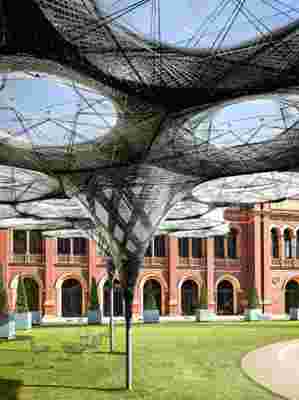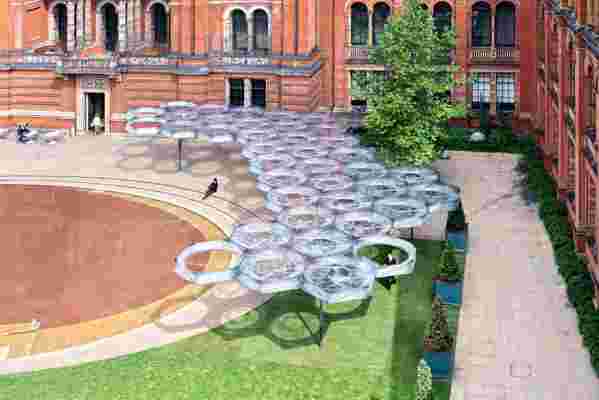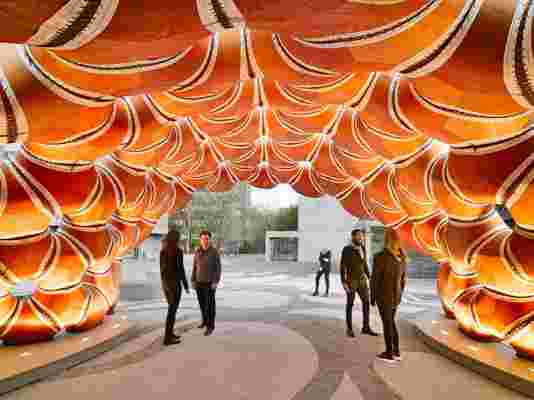German Architect Achim Menges Is Rethinking How We Build
According to German architect Achim Menges, it’s time to rethink how we build. “Over the past decade the materials and processes at our disposal have developed dramatically,” notes the Stuttgart-based talent, lamenting that contemporary architecture tends to be either “efficient but boring” or “exciting but wasteful.” As he insists, “there is a possibility to reconcile both ambitions.”
One radical approach can now be found in the courtyard of London’s Victoria and Albert Museum (V&A), where Menges has installed a futuristic structure dubbed the Elytra Filament Pavilion. Spanning more than 2,000 square feet, it weighs less than two and half tons—a feat achieved thanks to strands of glass and carbon fibers woven by a robot into the honeycomb canopy and vertical supports. “There is no steel frame, no underlying load-bearing structure—just fibers,” explains Menges, who collaborated with architect Moritz Dörstelmann, structural engineer Jan Knippers, and climate engineer Thomas Auer. For it and other projects, the question that Menges asks himself is, “How would a robot want to build?” rather than “How could a robot build as humans have always done?”

Architect Achim Menges’s Elytra Filament Pavilion in London, an experimental carbon-and glass-fiber structure.

An aerial view of the Elytra pavilion at London’s V&A; the canopy was woven by a robotic arm.
Trained at London’s Architectural Association during what he calls the “heyday of digital design,” Menges now balancesa private practice with his post as the head of the University of Stuttgart’s Institute for Computational Design. There,he and Knippers have been working with students since 2010 to create a new research pavilion each year. In 2015 they erected a curvaceous shelter made up of robot-sewn plywood pods, its form inspired by the shells of sea urchins. Theyear before, the team took cues from the underwater nests of diving bell spiders, devising a rigid dome out of aflexible bubble reinforced with robot-spun carbon fibers.
Back at the V&A, the Elytra Filament Pavilion continues to take shape. Between now and November 6, when the installation closes, new hexagonal modules—each woven on-site—will be added to the canopy. “Our idea was to create a lightweight, easy-to-install structure that’s also very compact,” Menges says. “I am interested in novelty on both the technical and design levels. Through that, you can make a lasting cultural contribution.” achimmengeet

A pavilion at the University of Stuttgart was inspired by sea urchin shells.
Related: See More AD Innovators